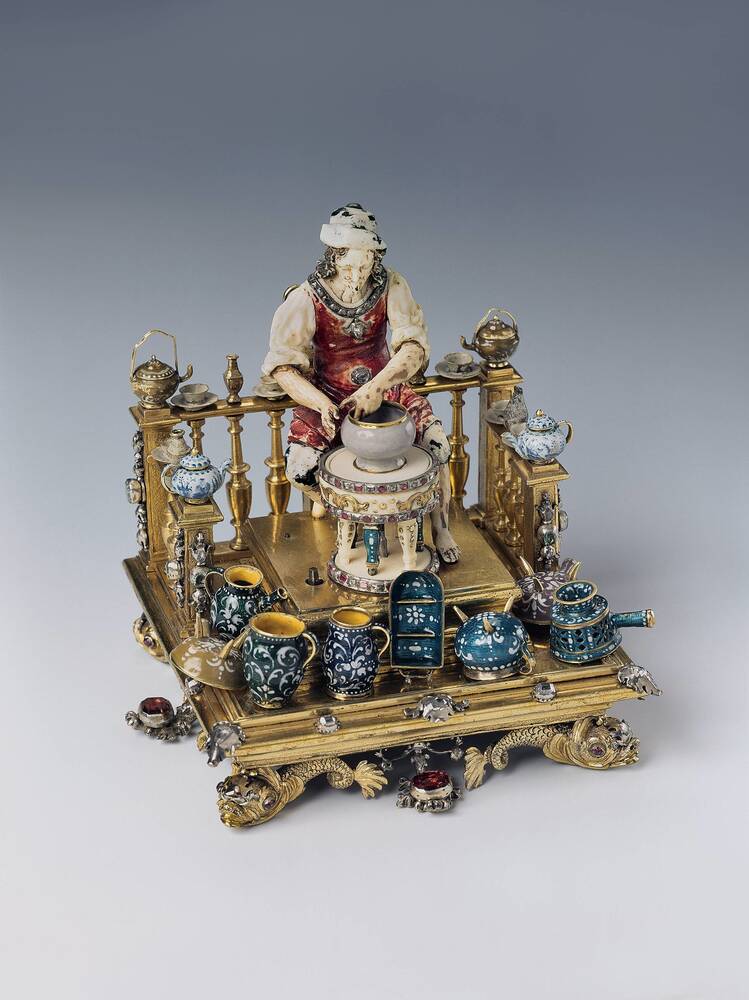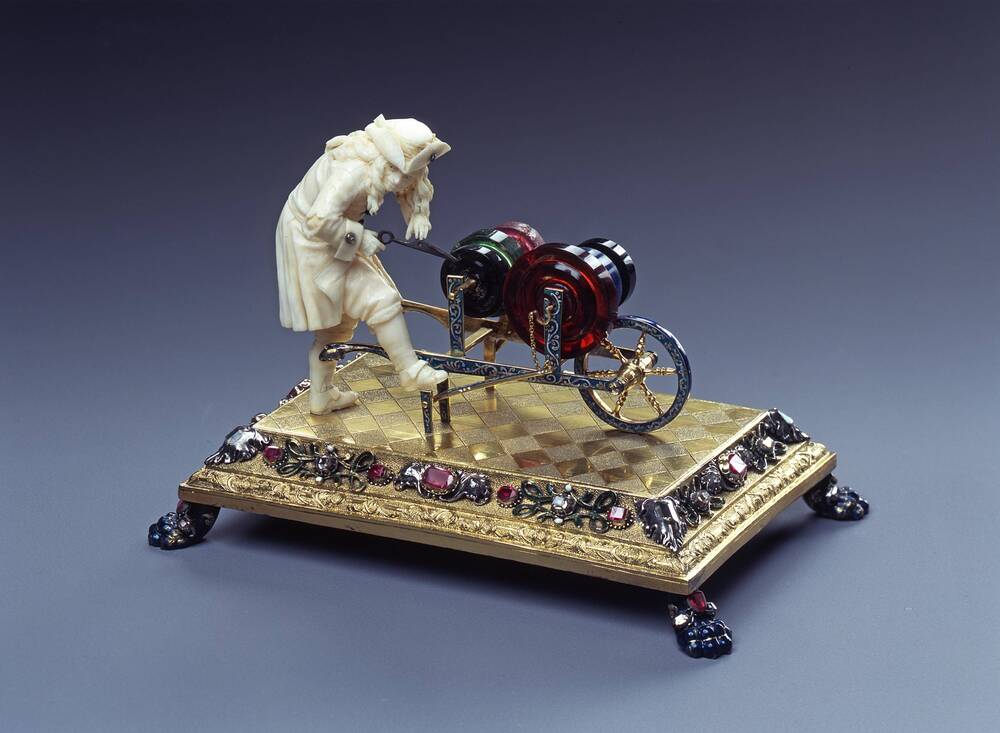Look at the concentration with which this potter, leaning forward slightly, fashions a large clay object on his wheel. A charming detail is the work he has finished: jugs and pots and a baking mould. On the balustrade behind him and next to him, we see tea bowls, vases and jugs in the Chinese style. They are a reflection of August the Strong’s passion for Chinese porcelain and his encouragement of the manufactory in Meissen, which was founded to produce this “white gold” in Saxony. The attention to detail is astonishing when you consider that this whole scene is just ten centimetres high! In the Baroque period, the potter’s wheel was driven by clockwork. On the left of the wheel’s foot is an opening, through which it was wound up.
Johann Heinrich Köhler presents this potter and other miniature figures with a love of detail that is quite extraordinary. The ivory figures were made by other craftsman; Köhler the jeweller provided the details. The arms-dealer on the pedestal has a tray full of pistols and other weapons; the cobbler is repairing an old shoe, his tools scattered about on the floor; and another craftsman is concentrating on sharpening one of the blades of a pair of shears.
These are not caricatures of the common folk. They are detailed reproductions of scenes from daily life. August the Strong loved these figures which had no purpose other than to document everyday reality.
It may seem perverse to the modern mind – turning the poor lives of simple workers into pieces of jewellery and then placing them in the Kunstkammer alongside luxurious ornaments and gold vessels. These and other genre figurines were no doubt inspired by the aristocrats’ custom, during the Baroque period, of getting dressed up as common working folk when they attended costume parties.


